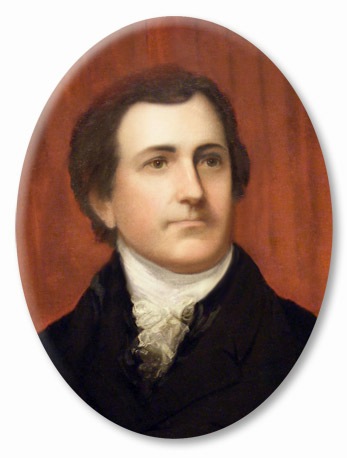Related Topics
...Pre-Convention Events
We had a varsity team, but we needed a plan.
The Virginia Plan
After a long period of dissatisfaction with the Articles of Confederation, and much scheming by Virginians, a convention of the thirteen states was called to meet in Philadelphia in late May 1787. George Washington agreed to attend, which assured the attendance of others, and James Madison tended to the myriad details of getting the Confederation Congress to agree to hold the convention, the thirteen states to appoint notable delegates to it, and the notables themselves to agree to the duty of attending. The long hand of George Washington directed much of the activity, and although he had professed uncertainty about the propriety of his attending, it was universally assumed that he would be the presiding officer. Although Madison had been skillful in stirring up widespread national approval, this was quite obviously a Virginia initiative. Virginia was the largest and richest state in the union, and quite easily fell into the idea that the responsibilities of leadership belonged to Virginia.

|
| Edmond Randolph |
Travel was uncertain in the Eighteenth century, and the delegates straggled into Philadelphia. Virginia naturally took care to arrive early, and its delegates held a number of informal meetings in various Philadelphia locations. By May 29, 1787, the Virginia delegation had greeted the incoming members from other states, taking care to pass around the notion that Virginia had a plan, or at least a proposal to begin the discussion. We are told that just about every word of the Virginia Plan was written by James Madison, although it was introduced to the Convention by Virginia's Governor, Edmond Randolph. It consisted of fifteen resolves or proposals, phrased as potential amendments to the Articles of Confederation. Since the Articles contained very little description of the details of government except to create a Congress, the proposed amendments were essentially only one amendment: Congress should be bicameral instead of having only one chamber, and the members of one chamber should be elected by the states in numbers proportionate to population size. Since Virginia had the largest population, that was scarcely a surprise, although not invariably a welcome surprise. To some of the small states, Virginia was saying that all our national problems came about because insufficient power had been given to Virginia. But it was a place to begin discussions, and since ten of the thirteen were small states, it was only a matter of time before the smaller states would propose something different. And sure enough, there promptly emerged what was known as the New Jersey Plan, proposing a unicameral Legislature, with an equal number of votes for every state. There were a few other ideas in both plans, but it was immediately apparent that the convention was going to begin with the rules of the Legislature, and would go no further unless small states and large ones could find a way to share power to their mutual satisfaction. With the Articles of Confederation, we had taken a major step toward a single unified nation. But it had not worked, and if the Convention could not find a way to make Union workable, the next step was not going to be a reversion to the Confederation Congress. It was most likely to result in thirteen independent countries, quarreling with each other, and eventually probably going to war with each other about something.
Originally published: Tuesday, September 18, 2012; most-recently modified: Monday, June 03, 2019